Augmented reality "will change the way architects work" says Greg Lynn
Venice Architecture Biennale 2016: augmented reality will revolutionise the architecture and construction industries according to architect Greg Lynn, who used Microsoft HoloLens to design his contribution to the US Pavilion at the Venice Biennale (+ movie).
The technology – which many people are now familiar with thanks to Pokémon GO – will inevitably change the way architects make design decisions, said Lynn, and could make rolls of drawings a thing of the past.
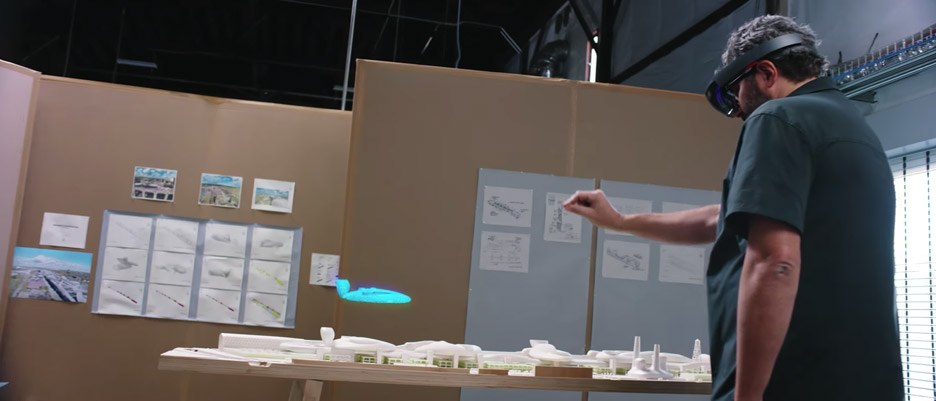
"Augmented reality technologies on job sites and in factories will, with absolute certainty, change the way buildings are constructed," the Los Angeles-based architect told Dezeen. "Therefore it will change the way architects work and will change their role."
"I wouldn't want to predict what changes will be made but it is inevitable that the technology is going to be adopted and will have an impact," he continued. "It is just too powerful a tool not to be used."
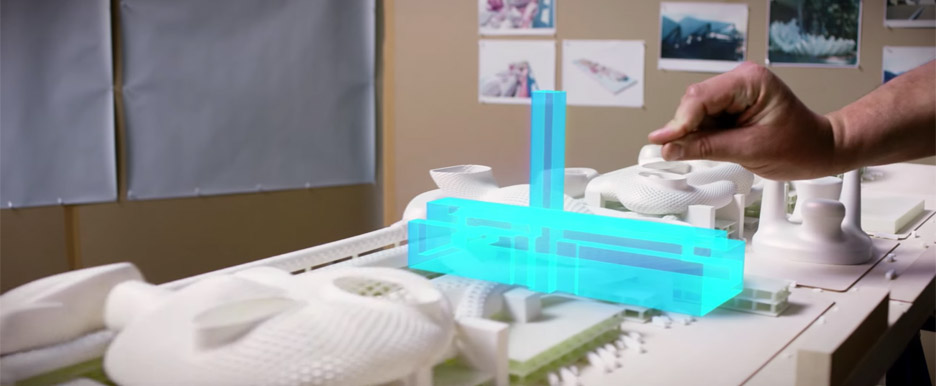
Unlike virtual reality, which creates a completely immersive virtual environment, augmented reality overlays digital content onto real-world imagery.
For architects, this means they can experience the interior of a building when it is still at the earliest stages of design. It also allows them to project digital information onto architectural models.
This solves a problem that Lynn claims all architects encounter – getting a project from screen to physical space.
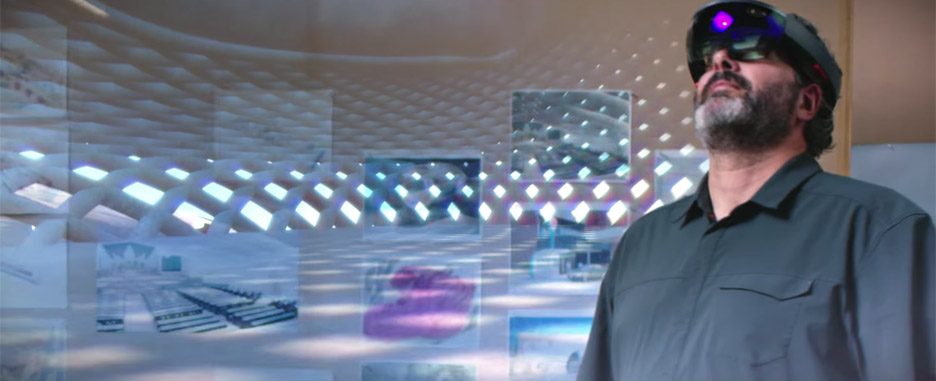
"It is a great tool for design," he explained. "It locks digital content to scale models first of all."
"Having the ability to both animate [models] with the simulated flow of equipment and people, as well as calling up more detailed digital content on the actual model in space, is amazing," he said.
Lynn, 52, often experiments with new technologies, with past projects ranging from a temperature-regulating chair to a carbon-fibre home.
He used augmented reality for the first time with his project for the US Pavilion at this year's Venice Architecture Biennale. As one of 12 architects invited to develop proposals for Detroit, he reimagined the Packard Plant – a huge abandoned car factory.
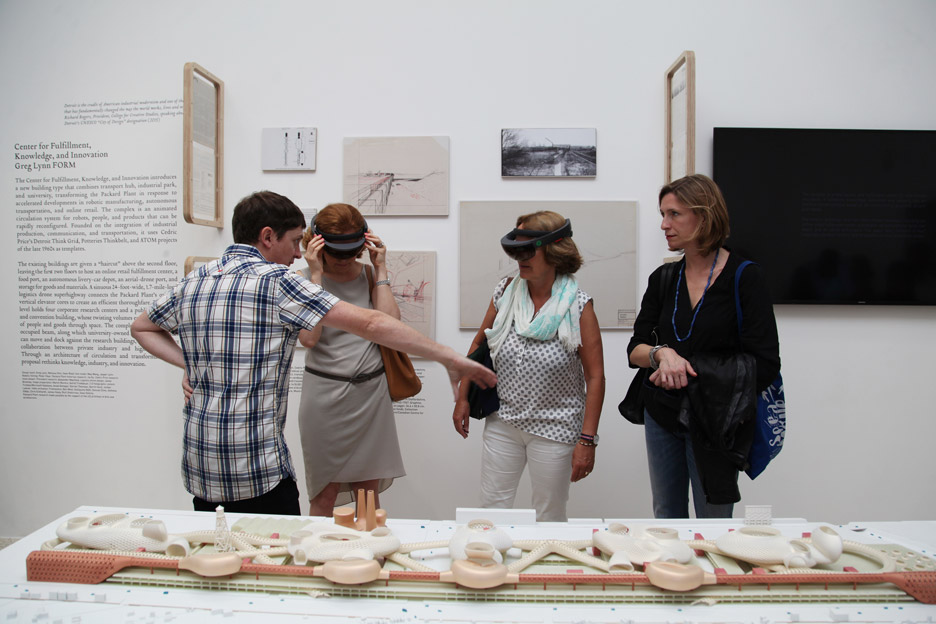
His concept was to transform this vast facility into a transport hub, industrial park, factory and university, called the Center for Fulfillment, Knowledge and Innovation.
Lynn used Microsoft HoloLens to develop the proportions of his design. The device – launched as a collaboration between Microsoft and GPS technology company Trimble – also allowed visitors to the US Pavilion to see an animated version of the final model.
The architect said there are also plenty of opportunities he didn't explore, like streamlining construction processes.
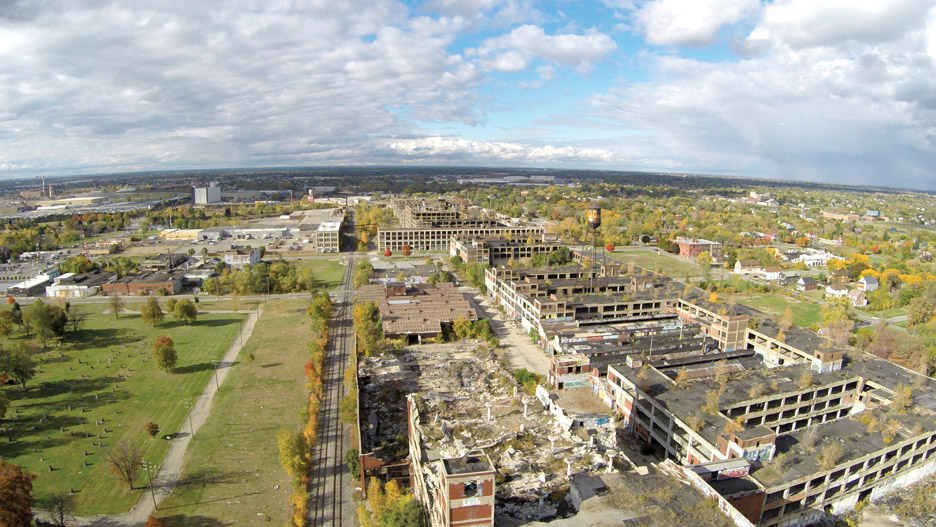
"Fabricators and builders with HoloLens technology could replace rolls of drawings, lasers and measuring tapes with digital facsimiles of physical components located in physical space," he said.
"It will certainly revolutionise construction, as it is much more intuitive and easy to adopt than digital versions of drawings that many trades have difficulty integrating into their workflow."
Here is an edited transcript of the interview with Lynn:
Amy Frearson: How did you find out about the technology?
Greg Lynn: It was Trimble that first made me aware of the HoloLens in particular and augmented reality in general.
I have been familiar with virtual reality for 20 years but it was only through Trimble that I really understood the experience, the implications and the principle of locking digital content to physical spaces and mixing them to produce a very new kind of experience of space.
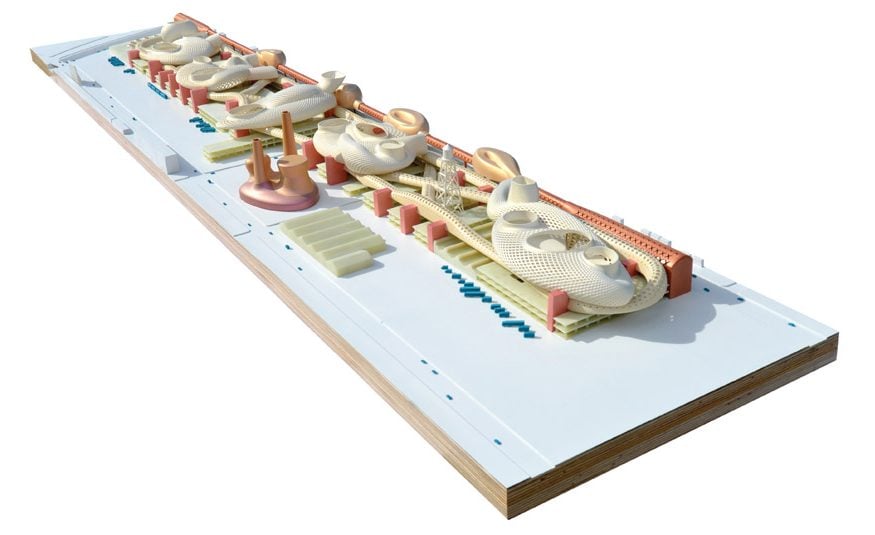
Amy Frearson: Why did you decide to use it for your Venice Biennale project?
Greg Lynn: I remember, a very long time ago, using hidden lines interactively on screen, then projecting shade and shadows, and finally doing simulated physics and animation on screen. At the first instance of seeing these things on Silicon Graphics Workstations in the early 1990s I knew there was no going back and that the correct application needed to be identified to figure out how to use the new tools in a meaningful way.
I was speaking with Trimble about using their mixed reality technology, not for architecture but for customer experience, in an initiative with Piaggio Fast Forward. But I immediately understood the benefits for design and even more for project delivery and communication.
Getting a demonstration by Trimble of the uses of the HoloLens is what started the decision to use the technology for the US Pavilion at the Venice Biennale. Because I was interested in rethinking production in terms of logistics and transportation, instead of manufacturing, it was a natural step to animate the physical models with the movement of trucks, land drones and aerial drones on the model for visitors to the exhibition.
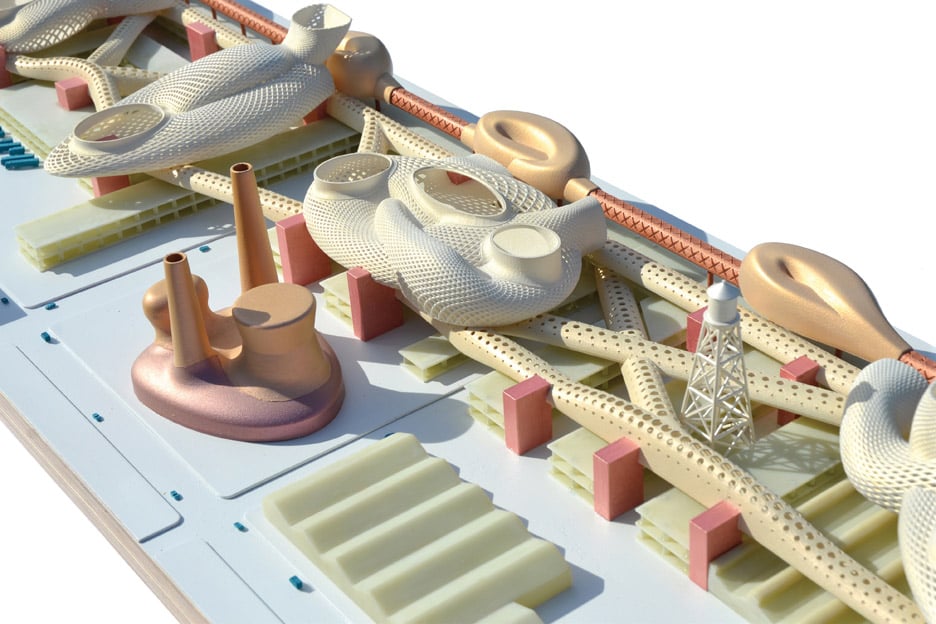
It also was a powerful tool for presenting precedents of scale and typology, as well as the history of the development of the site on the physical model. So we had no drawings whatsoever in the exhibition, only the Trimble/HoloLens content associated with the physical model, and the Framestore and Microsoft videos for the visitors that were unable to have the augmented reality experience.
Amy Frearson: What are the main benefits of using Hololens in architecture?
Greg Lynn: It is a great tool for design. It locks digital content to scale models first of all. We build an enormous amount of physical models and having the ability to both animate them with the simulated flow of equipment and people, as well as calling up more detailed digital content on the actual model in space, is amazing.
What is even more significant, which we didn't touch with the case of the Center for Fulfillment, Knowledge and Innovation at the Packard Plant, is in project delivery and construction. Fabricators and builders with HoloLens technology could replace rolls of drawings, lasers and measuring tapes with digital facsimiles of physical components located in physical space.
It will certainly revolutionise construction, as it is much more intuitive and easy to adopt than digital versions of drawings that many trades have difficulty integrating into their workflow.
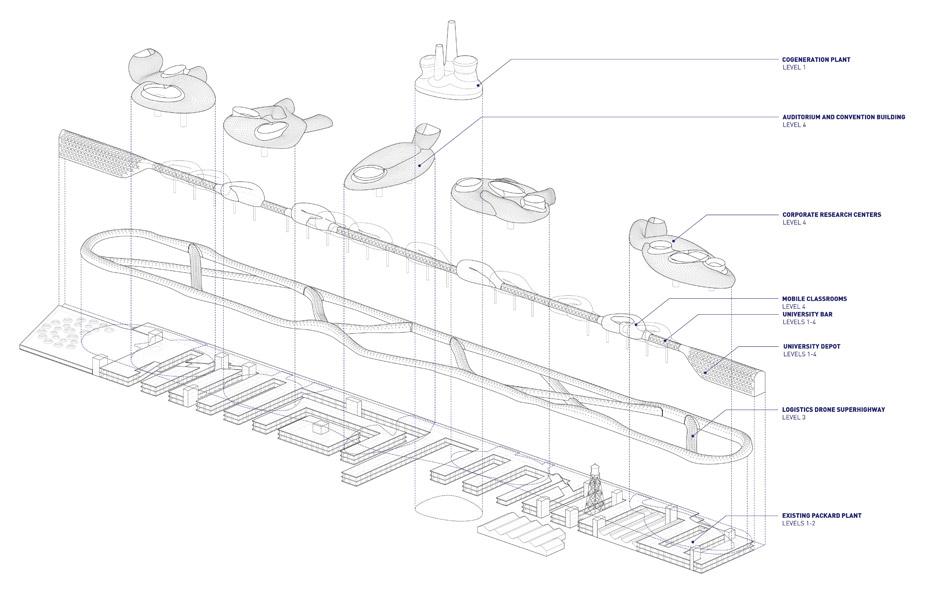
Amy Frearson: Could this technology change the way architects work?
Greg Lynn: It certainly could. Its biggest impact is in manifesting 3D digital content insitu. So will it change design language, vocabulary and complexity as digital tools did in the 90s? No. Will it change the methods of communicating design through construction? Absolutely.
Amy Frearson: Do you think it will become widespread in the industry?
Greg Lynn: This is one of those moments where with total confidence I can say it is inevitable. Augmented reality technologies on job sites and in factories will, with absolute certainty, change the way buildings are constructed. Therefore it will change the way architects work and will change their role. How and what that change is remains to be seen.
It could diminish or expand design away from or onto the factory floor and the job site. I wouldn't want to predict what changes will be made but it is inevitable that the technology is going to be adopted and will have an impact. It is just too powerful a tool not to be used for savings in time, money, errors and omissions.